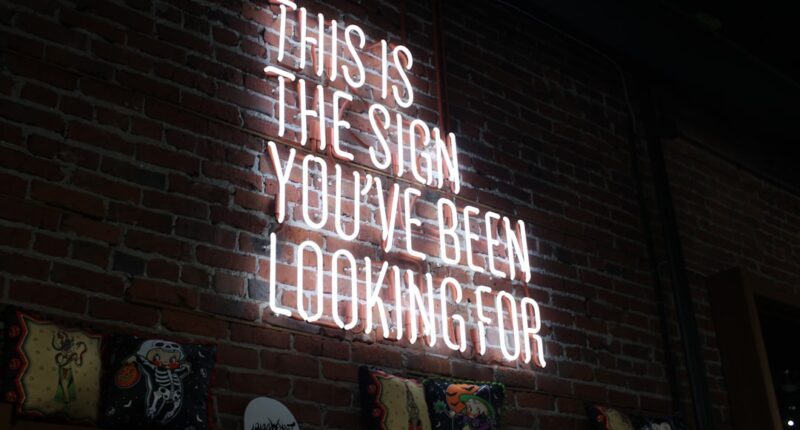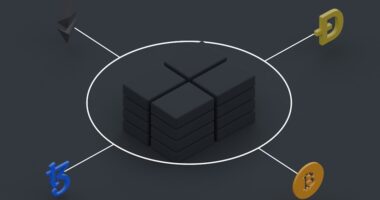Non-fungible tokens, commonly referred to as NFTs, have emerged as a revolutionary force in the digital landscape, fundamentally altering how we perceive ownership and value in the virtual realm. Unlike cryptocurrencies such as Bitcoin or Ethereum, which are fungible and can be exchanged on a one-to-one basis, NFTs are unique digital assets that represent ownership of a specific item or piece of content. This uniqueness is secured through blockchain technology, which provides a transparent and immutable ledger of ownership.
As a result, NFTs have gained traction across various sectors, from art and music to gaming and real estate, creating new opportunities for creators and collectors alike. The rise of NFTs has sparked a wave of interest and investment, with high-profile sales capturing headlines and drawing in both seasoned investors and curious newcomers. The allure of owning a piece of digital art or a rare collectible has led to a burgeoning market where digital assets can fetch staggering prices.
For instance, in March 2021, a digital artwork by Beeple sold for an astonishing $69 million at a Christie’s auction, marking a significant milestone in the acceptance of NFTs as legitimate assets. This phenomenon has not only highlighted the potential for profit but has also raised questions about the nature of ownership, copyright, and the future of digital content.
Key Takeaways
- NFTs are unique digital assets that represent ownership or proof of authenticity of a specific item or piece of content.
- NFTs have evolved from simple digital collectibles to encompass a wide range of industries including art, gaming, real estate, fashion, and more.
- Unique NFT concepts include fractionalized ownership, dynamic NFTs, and NFTs with utility beyond just ownership.
- NFTs have disrupted the art world by providing artists with new ways to monetize their work and engage with their audience.
- The gaming industry has embraced NFTs as a way to provide players with true ownership of in-game assets and create new revenue streams for developers.
- NFTs are making waves in the real estate industry by enabling fractional ownership of properties and streamlining the buying and selling process.
- Fashion and collectibles are being revolutionized by NFTs, allowing for digital ownership of limited edition items and unique virtual experiences.
- Future trends in NFTs include increased regulation, integration with virtual reality, and the potential for NFTs to become a standard part of digital transactions.
Evolution of NFTs
The Early Days of NFTs
The concept of non-fungible tokens is not entirely new; it has evolved over several years, with its roots tracing back to the early days of blockchain technology. The first notable instance of NFTs can be found in the form of “Colored Coins,” which were introduced on the Bitcoin blockchain around 2012. These early experiments aimed to represent real-world assets on the blockchain but lacked the functionality and infrastructure that would later be developed.
The Breakthrough with Ethereum
The true breakthrough came with the introduction of Ethereum in 2015, which enabled the creation of smart contracts—self-executing contracts with the terms directly written into code. In 2017, the NFT landscape began to take shape with the launch of CryptoKitties, a blockchain-based game that allowed users to buy, sell, and breed virtual cats. Each CryptoKitty was unique and represented an NFT on the Ethereum blockchain.
The Rise of NFT Platforms
The game’s popularity led to network congestion and highlighted the potential for NFTs beyond mere collectibles. Following this, various platforms emerged to facilitate the creation and trading of NFTs, such as OpenSea, Rarible, and Foundation. These platforms democratized access to NFT creation, allowing artists and creators from diverse backgrounds to mint their own tokens and engage with a global audience.
Unique NFT Concepts

The versatility of NFTs has given rise to a plethora of unique concepts that extend far beyond traditional art and collectibles. One intriguing application is in the realm of virtual real estate. Platforms like Decentraland and Cryptovoxels allow users to purchase parcels of virtual land as NFTs, enabling them to build, develop, and monetize their digital properties.
This concept has attracted investors looking to capitalize on the growing interest in virtual worlds and metaverses, where social interaction and commerce occur in immersive environments. Another innovative use case for NFTs is in the music industry. Artists are exploring ways to leverage NFTs to connect directly with their fans while retaining more control over their work. Musicians can release exclusive tracks or albums as NFTs, offering fans unique experiences such as backstage passes or limited-edition merchandise.
For example, DJ 3LAU made headlines by selling an NFT album that included unreleased music and personalized experiences for buyers. This shift not only empowers artists but also fosters a deeper connection between creators and their audiences.
NFTs in the Art World
| Category | Metrics |
|---|---|
| Market Growth | 300% increase in NFT art sales in 2021 |
| Artists | Over 10,000 artists have entered the NFT market |
| Platforms | Multiple NFT marketplaces have emerged for art sales |
| Collectors | Growing community of NFT art collectors |
The art world has been one of the most prominent arenas for NFT adoption, with artists embracing this technology to redefine how art is created, sold, and experienced. The ability to tokenize digital art has opened up new avenues for artists who previously struggled to monetize their work in an increasingly digital landscape.
One notable example is the artist Pak, who has gained significant acclaim for his innovative approach to digital art and NFTs. In March 2021, Pak launched “The Merge,” an NFT artwork that allowed collectors to purchase individual “mass” units that could be combined into a single piece. The sale generated over $91 million, showcasing the potential for new forms of artistic expression within the NFT space.
Additionally, established institutions like museums are beginning to recognize the importance of NFTs, with some even hosting exhibitions dedicated to digital art and blockchain technology.
NFTs in the Gaming Industry
The gaming industry has also embraced NFTs as a means to enhance player experiences and create new economic models within virtual environments. By integrating NFTs into games, developers can offer players true ownership of in-game assets such as skins, weapons, or characters. This shift allows players to buy, sell, or trade their items on secondary markets, creating a vibrant economy around virtual goods.
One prominent example is Axie Infinity, a blockchain-based game where players collect and battle fantasy creatures called Axies. Each Axie is an NFT with unique traits and abilities, making them valuable assets within the game. Players can earn cryptocurrency by participating in battles or breeding Axies, leading to a thriving ecosystem where some players have turned gaming into a full-time profession.
This model not only incentivizes gameplay but also fosters community engagement as players collaborate and compete in various ways.
NFTs in Real Estate

Streamlining Transactions with Blockchain Technology
One notable project in this space is Propy, a platform that facilitates international real estate transactions using blockchain technology. Propy allows buyers to purchase properties using cryptocurrencies while ensuring that all documentation is securely stored on the blockchain.
A New Era for Property Ownership
In 2021, Propy made headlines when it facilitated the sale of a property in Florida as an NFT, marking one of the first instances of real estate being sold in this manner.
The Future of Real Estate Transactions
As the real estate sector continues to explore the potential of NFTs, it is likely that we will see a shift towards more efficient and secure transactions. With the ability to tokenize real estate assets and store ownership records on the blockchain, NFTs are poised to revolutionize the way we buy, sell, and own property.
NFTs in Fashion and Collectibles
The fashion industry is also beginning to recognize the value of NFTs as a means to engage consumers and create unique experiences around brand loyalty. Fashion brands are exploring ways to incorporate NFTs into their marketing strategies by offering limited-edition digital clothing or accessories that can be worn in virtual environments or social media platforms. This trend not only appeals to tech-savvy consumers but also aligns with the growing interest in sustainability within fashion.
For instance, luxury fashion house Gucci launched an NFT collection featuring digital sneakers that could be worn in virtual spaces like Roblox or Fortnite. This initiative allows consumers to express their style in digital realms while also creating buzz around the brand’s innovative approach to fashion. Additionally, collectibles have found a new life through NFTs, with platforms like NBA Top Shot allowing fans to buy, sell, and trade officially licensed highlight moments from basketball games as digital collectibles.
Future Trends in NFTs
As the NFT landscape continues to evolve, several trends are emerging that could shape its future trajectory. One significant trend is the increasing focus on interoperability between different blockchain networks. As more platforms adopt NFT technology, there is a growing need for seamless integration across ecosystems.
This interoperability would allow users to transfer their digital assets between various platforms without restrictions, enhancing user experience and expanding market opportunities. Another trend is the rise of fractional ownership of NFTs. By allowing multiple investors to own shares of high-value NFTs, fractional ownership democratizes access to expensive digital assets that may have previously been out of reach for many collectors.
This model could lead to increased liquidity in the NFT market as more individuals participate in ownership without needing substantial capital upfront. Moreover, regulatory scrutiny surrounding NFTs is likely to increase as governments seek to understand their implications on taxation and intellectual property rights. As the market matures, clearer guidelines may emerge that could impact how NFTs are created, bought, and sold.
In conclusion, while it is impossible to predict every development within this rapidly changing landscape, it is evident that NFTs are poised to play an increasingly significant role across various industries. Their ability to redefine ownership and create new economic models will continue to attract attention from creators, investors, and consumers alike as they navigate this exciting frontier.
If you’re interested in learning more about NFT ideas, you should check out this article on ETH News. This website covers a wide range of topics related to Ethereum and blockchain technology, including the latest trends in NFTs. Whether you’re a beginner looking to understand the basics or an experienced investor seeking new opportunities, ETH News has you covered. Be sure to explore their content for valuable insights and updates on the world of NFTs.
FAQs
What are NFT ideas?
NFT ideas refer to the various concepts and designs that can be turned into non-fungible tokens (NFTs). These ideas can range from digital artwork and collectibles to virtual real estate and in-game items.
How can NFT ideas be created?
NFT ideas can be created by artists, designers, and creators who conceptualize and develop unique digital assets that can be tokenized as NFTs. These ideas can be brought to life using various digital tools and platforms.
What are some popular NFT ideas?
Some popular NFT ideas include digital art, music, videos, virtual real estate, domain names, in-game items, and collectibles. These ideas have gained traction in the NFT space and have been successfully tokenized and traded.
How are NFT ideas tokenized?
NFT ideas are tokenized using blockchain technology, which allows for the creation of unique digital tokens that represent ownership of a specific digital asset. This process involves minting the NFT on a compatible blockchain platform.
What is the potential value of NFT ideas?
The potential value of NFT ideas varies depending on factors such as scarcity, demand, and the perceived value of the digital asset. Some NFT ideas have sold for millions of dollars, while others may have more modest valuations.
Where can NFT ideas be bought and sold?
NFT ideas can be bought and sold on various online marketplaces and platforms that support NFT trading. These platforms include popular marketplaces like OpenSea, Rarible, and Foundation, as well as specialized platforms for specific types of NFTs.





